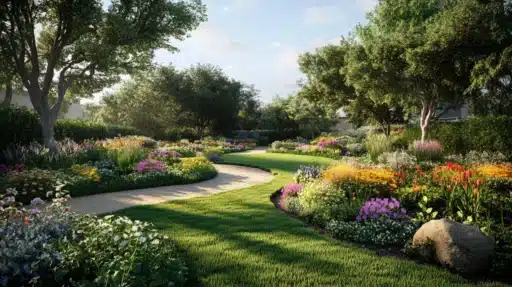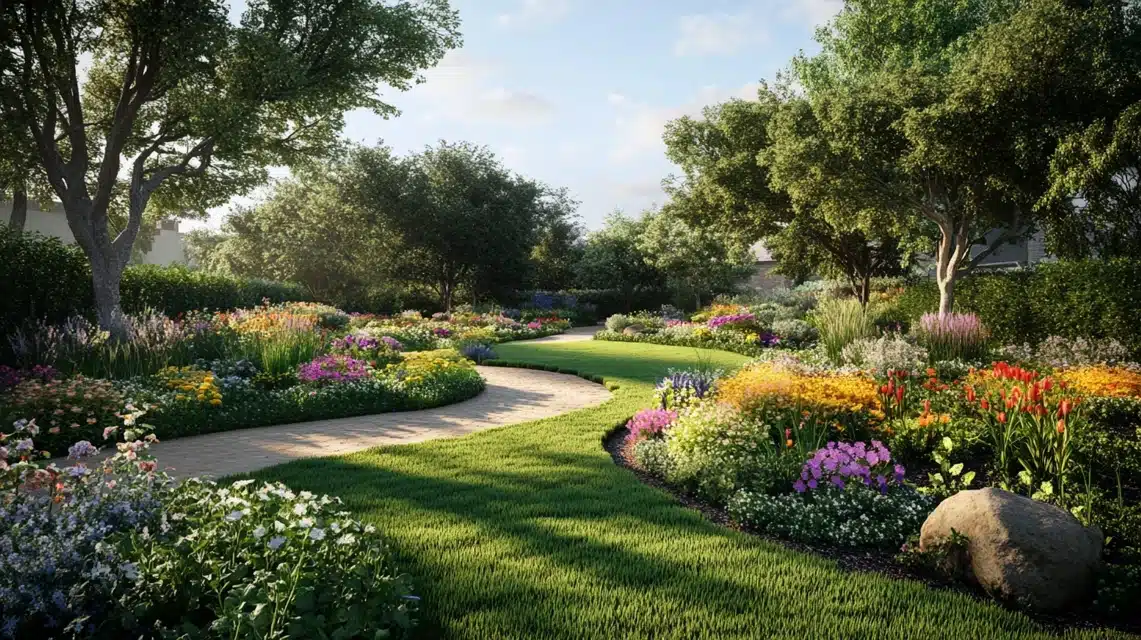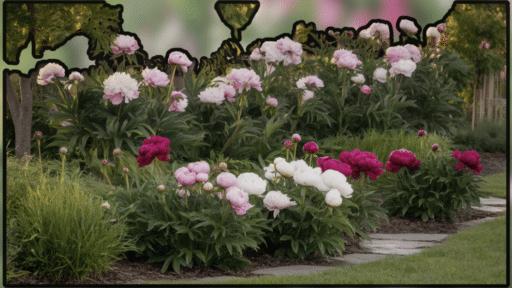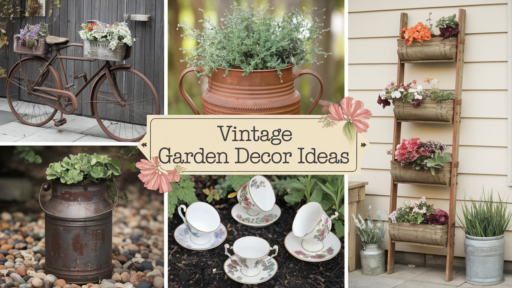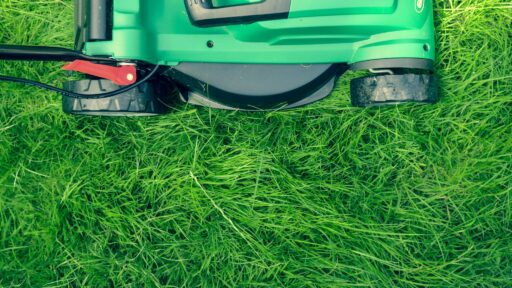When I first started planning my flower bed last spring, I felt lost.
After many attempts, mistakes, and lessons learned, I want to share what worked for me.
I’ve spent countless hours in my garden, testing different layouts and plant combinations.
This guide comes from my hands-on experience,e and I’m excited to share these practical tips with you.
In this blog, we’ll look at everything from picking the right spot for your plants to keeping them healthy with proper watering.
I’ll show you how to plan your layout, select plants that work well together, and maintain your garden throughout the year.
Essential Tips When Planning Flower Bed Layout
1. Plan the Layout
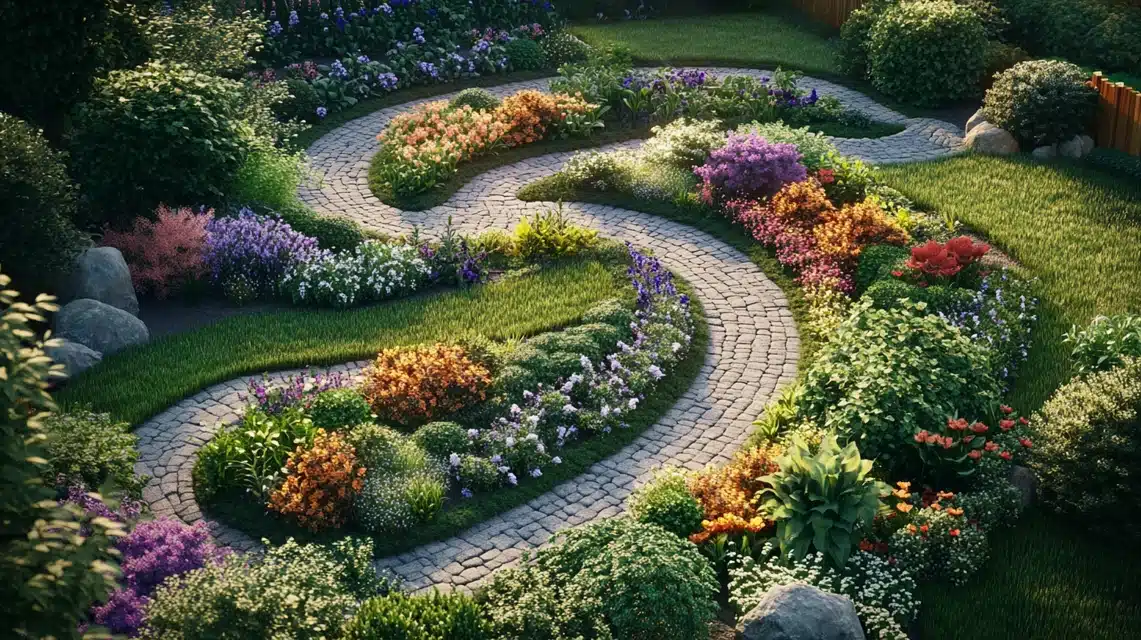
When I designed my first flower bed, I learned that the shape makes a real difference.
My current garden has both curved and straight edges – the curved sections add a soft look near my patio, while straight edges work better along my fence line.
For size, I make sure to leave about three feet of depth for most beds, which gives plants room to grow.
Here’s my favorite trick: I take a garden hose and lay it out to test different shapes.
It lets me see how the bed will look and adjust until I find the perfect fit.
This simple step has saved me from making permanent mistakes.
2. Choose the Right Plants
In my garden, I mostly use native plants because they just make sense.
These plants know our local weather and soil – they’ve been growing here naturally for years. I have some black-eyed Susans and coneflowers that come back stronger each year, and they need very little water.
For seasonal color, I mix these hardy perennials with a few annual plants in key spots.
Most of my perennials return yearly, saving me money and time.
When friends visit, they often notice how many butterflies and birds visit these native plants.
3. Spot the Right Place for your Plant
I learned through trial and error that putting plants in the right spot is key.
I watch my garden at different times to see which areas get morning, afternoon, or full sun.
Some spots get six hours of sun, while others get shade from my maple tree.
When I plant, I always check the plant tag for spacing needs – I used to crowd my plants too close together, but now I know better.
For example, I plant my tall sunflowers at least 6 inches apart, which helps air move between them and prevents mold problems.
4. Watering the Flower Bed
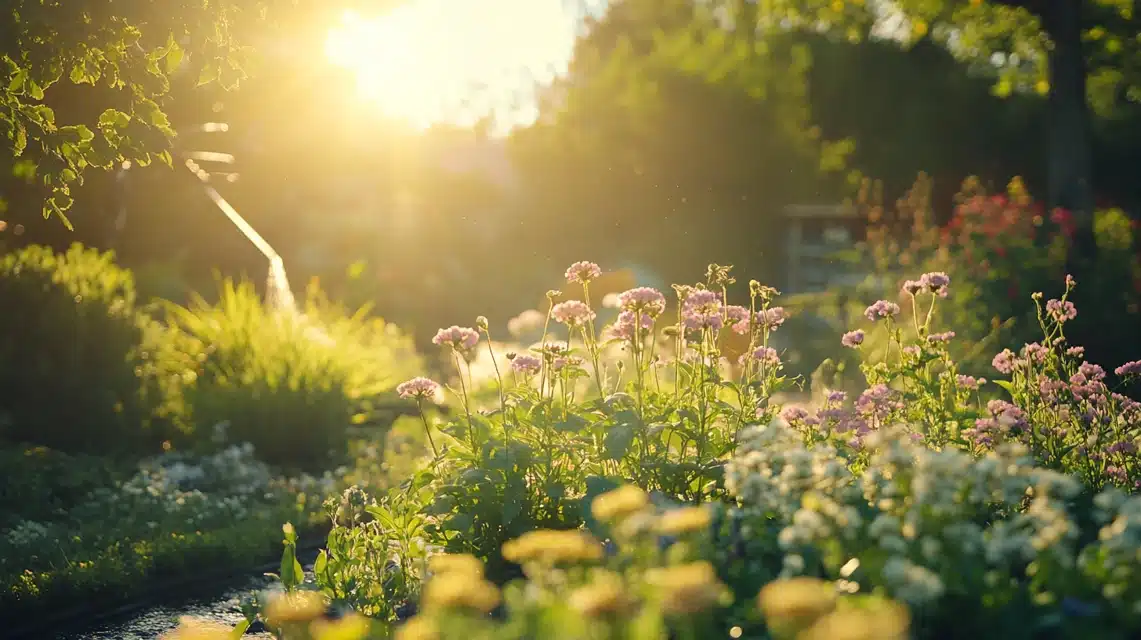
My watering system has changed over time. I started with a basic hose, but now I use drip lines in most beds.
They save me time and put water right where plants need it.
I’ve noticed my water bill is lower too. The most important lesson I’ve learned is timing, I water early in the morning, around 6 AM, or in the evening after 6 PM.
This way, plants can drink up the water before the sun gets strong.
My plants stay healthier, and I use less water overall.
5. Mulch for Healthy Flowers
I use natural brown mulch in my beds – it’s my secret weapon for healthy plants.
I’ve tried wood chips, pine straw, and shredded leaves.
Each works well, but I prefer wood chips for their neat look and how long they last.
The key is getting the thickness right – I spread it about 2-3 inches deep.
Here’s a tip I wish I’d known earlier: keep mulch about 3 inches away from plant stems and your house.
This stops rot and keeps pests from making homes near your walls.
6. Observe your Garden Throughout the Season
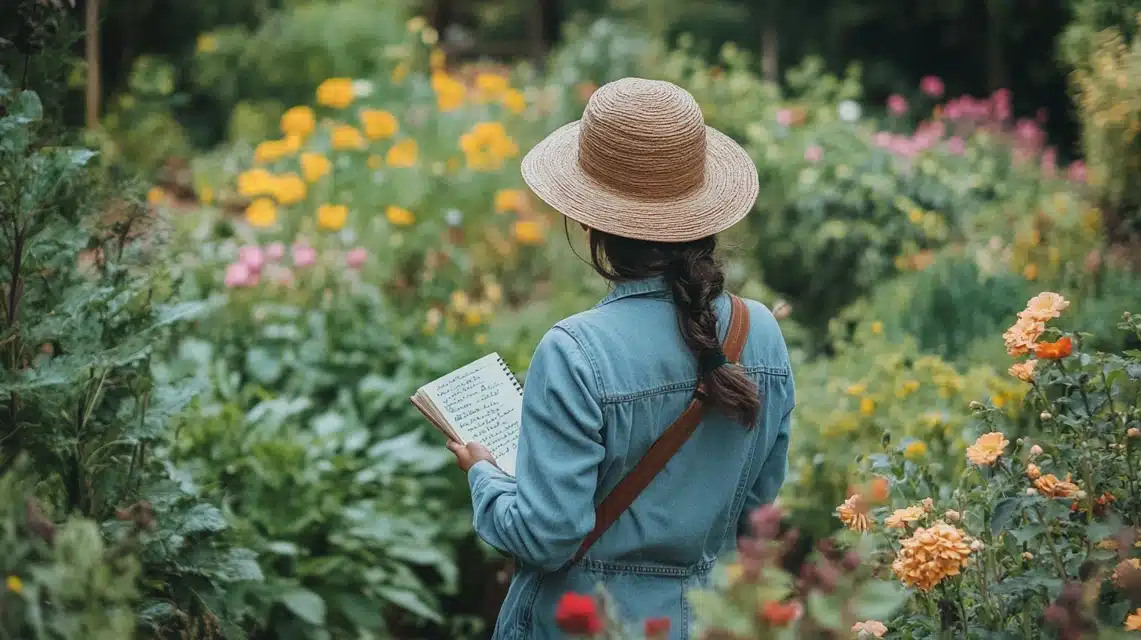
I keep a simple notebook by my back door to track what happens in my garden.
Each weekend, I walk through my beds and write down which plants are blooming, which need extra care, and which spots look empty.
These notes help me remember what worked well and what didn’t.
Last year, my notes showed that my garden needed more color in late summer, so I added some late-blooming plants to fill the gap.
It’s like getting to know a friend – the more time you spend observing your garden, the better you understand what it needs.
I take quick photos on my phone to track changes through the seasons.
When winter comes, I look back at these pictures to plan improvements for next spring.
This simple habit has made my garden better each year.
Inspiration Sources for Your Flower Bed
Local Gardens
I find some of my best garden ideas when I visit local gardens.
Every month, I take a walk through our city’s botanical garden to see what’s growing.
I notice how they group plants and use different heights to create interest.
Our community gardens are great spots too, they show what works in our local climate.
Last week, I joined a garden tour in my neighborhood and picked up tips from other home gardeners.
These visits help me see real examples of what might work in my own space.
Books
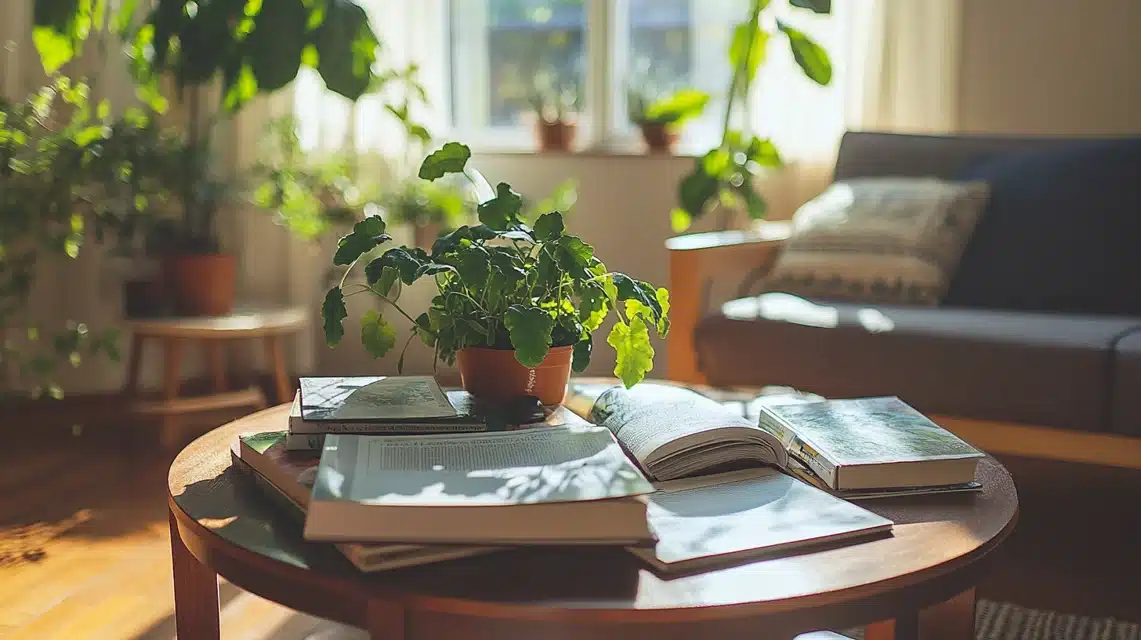
I keep my favorite gardening books close at hand. The Well-Tempered Garden by Christopher Lloyd sits on my coffee table, full of notes and bookmarks.
For specific plants, I rely on guides like The Plant Lover’s Guide series, they’re filled with photos and growing tips.
When I need help with design, I turn to Home Outside by Julie Moir Messervy.
These books give me solid advice when I’m stuck or trying something new.
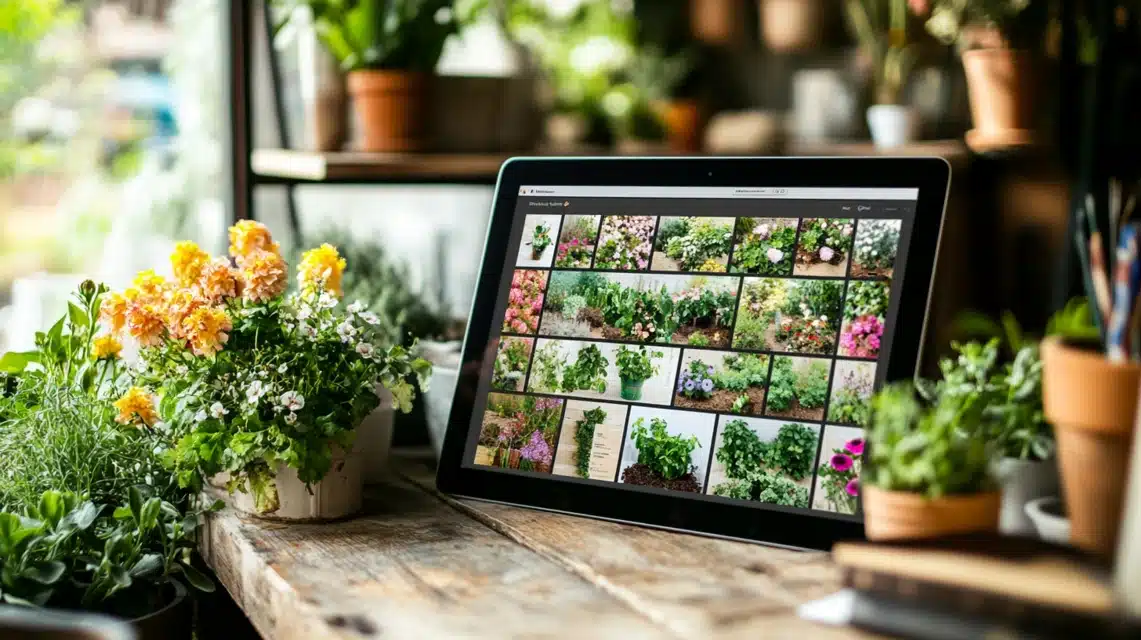
I’ve made a garden planning board on Pinterest that’s become my digital notebook.
I save photos of gardens that catch my eye and layouts I want to try.
When searching, I look up specific terms like #SmallGardens or #BackyardFlowers to find ideas that match my space.
I’ve found that following garden centers and plant nurseries gives me seasonal tips.
My board helps me plan color combinations and see how different plants look together before I buy them.
Some Flower Bed Layout Ideas
Heat Tolerant Garden
My sunny backyard needed tough plants that could handle hot days.
I planted sedum in the front, with tall grasses behind them.
Purple salvia and yellow yarrow add color without needing much water. These plants stay strong even in August heat.
I group similar plants together to create blocks of color, and I make sure to space them so air can flow between them.
This garden stays green and full all summer with just weekly watering.
Heat Loving Flower Garden
I filled this section with plants that love the sun.
Black-eyed Susans create bright yellow masses from July through fall.
Purple coneflowers attract butterflies and stand tall against summer storms.
I mixed in some daylilies – they bloom in waves and their leaves stay green all season.
These plants actually look better in the heat, and they come back stronger each year.
Corner Fence Garden

My fence corner used to be a blank spot until I turned it into a garden feature.
I started with tall plants at the back – morning glories climb the fence and bloom each morning.
In front, I added medium-height plants like Shasta daisies. For the edge, I used low-growing sweet alyssum.
The different heights make a natural triangle that fits perfectly in the corner.
This garden catches everyone’s eye when they walk by.
Easy to Care Garden
This is my favorite garden style because it mostly takes care of itself.
I picked plants that don’t need much attention. Hostas fill shady spots and spread on their own.
Daylilies and black-eyed Susans bloom for weeks without deadheading.
I grouped plants that need similar water, so I don’t have to remember different watering schedules.
A thick layer of mulch keeps weeds down and holds moisture in.
Clay Soil Garden
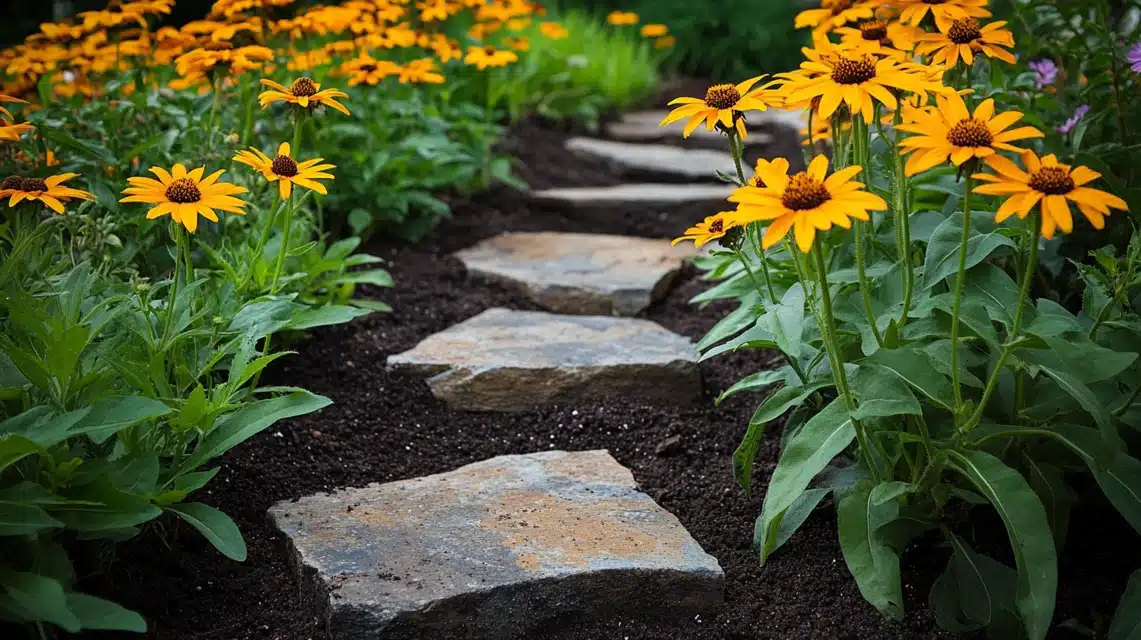
In my clay soil beds, I mix in compost every spring to help with drainage.
I’ve found that black-eyed Susans, purple coneflowers, and blazing stars grow well here.
These plants don’t mind heavy soil once they’re established.
I’ve added paths between plants using stepping stones – this keeps me from compacting the soil when I work in the garden.
Each year, the soil gets better as plants grow and their roots break up the clay.
Conclusion
When I started this garden project, I wished someone had given me a simple guide like this.
After years of learning what works, I’m sharing these practical tips with you.
Whether you’re dealing with clay soil, hot sun, or want an easy-care garden, these ideas will help you create a beautiful flower bed.
Remember, start with a good plan, pick the right plants for your space, and let your garden teach you what it needs.
If you’re ready to start your garden, pick one of these layouts and give it a try.
You’ll be surprised at how simple it can be when you follow these steps.
Frequently Asked Questions
How do you arrange plants in a flower bed?
Put tall plants at the back, medium-height plants in the middle, and short plants in front. This creates layers and lets you see all your flowers.
How many perennials to plant together?
Plant perennials in groups of 3, 5, or 7 of the same type. This creates visual impact and makes your garden look more organized.

